Which is Best? Canberra’s Three Share Alternatives Ridden & Rated
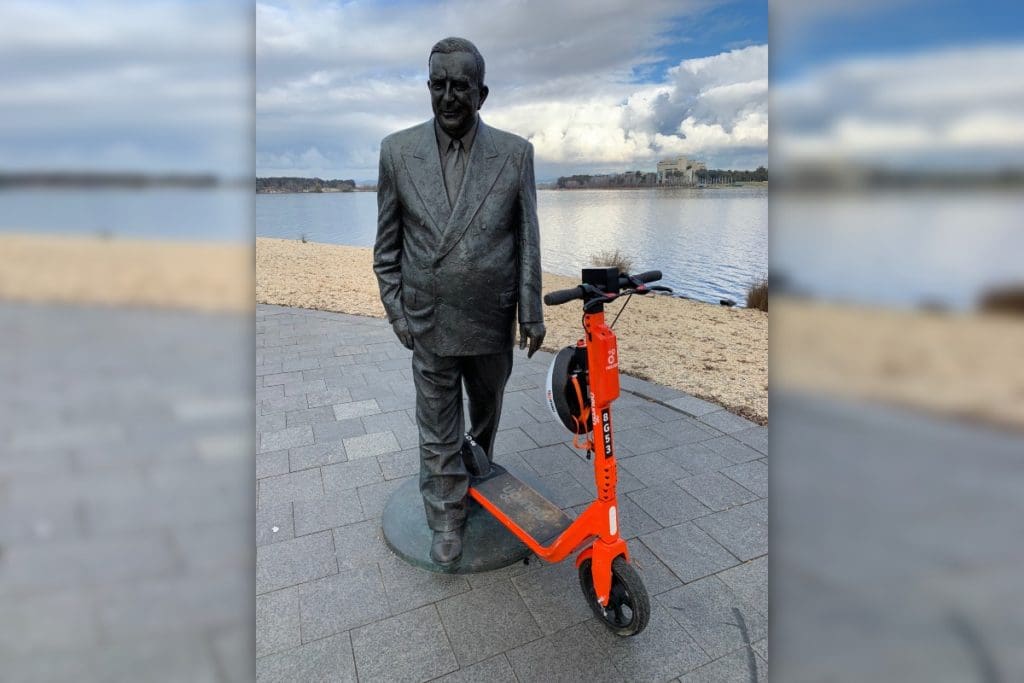
Canberra, ACT
Canberra is widely considered to be the best cycling city in Australia. It’s also one of the first places to legalise the riding of e-scooters. As we have previously written about, Canberra’s two competing scooter-share schemes are booming.
On a chilly mid-winter’s afternoon, I took the opportunity to test ride all three of Canberra’s shared bike and scooter alternatives, Neuron, Beam and Airbike.
Airbike offers conventional, non-electric bicycles in a dockless share system. Neuron and Beam both offer e-scooters.

I rode all three options for a short, out and back ride on an identical route along the northern shore of Lake Burley Griffin. Many scooter hires are for riding along this stretch. But I suspect that most of the regular hirers use them in the city centre for short week-day commutes.
Despite the 13 degree maximum temperature and overcast skies, there were plenty of tourists who were enjoying the same path along with lots of locals, mainly on road bikes, but some on scooters.
Of the tourists, it appeared like a 50% split between Neuron and Beam scooters being used, but I only saw one Airbike being ridden.
Airbike

Normally you’d think that a bicycle is the best option for higher speed and longer distances when compared with a scooter. But the Airbike comes with some serious disadvantages.
Worst of all, it’s tiny!
Its proportions look about normal, but when you realise that those wheels are not 700c or even 26 inch, but 24 inch, you start to see how tiny this bike is. There’s nothing wrong with small wheels in themselves. There a bikes with even smaller wheels that comfortably accommodate tall adults, but the Airbike’s seatpost is equally vertically challenged. It’s less than half the length it needs to be.
I’m 182 cm tall or exactly six feet in the old scale. So perhaps I’m slightly taller than average, but the maximum seat height was about 150mm (6 inches) too low for me. That made riding this bike an uncomfortable, unenjoyable experience.
According to a global research project conducted by Imperial College London, the average Australian male is 179.2 cm tall, so these bikes are way too small for even the average Australian male and no doubt also for taller females.
The handgrips were also designed for tiny, narrow hands. I found myself inadvertently ringing the twist grip bell because my palm wouldn’t fit on the handgrip section alone. One end of the handlebars was un-plugged – a safety concern.
The bike is only single speed, so even the most gentle rise had my cramped knees aching.
But you wouldn’t want to be going anywhere too hilly because the cable operated hub brakes were quite weak and spongy.
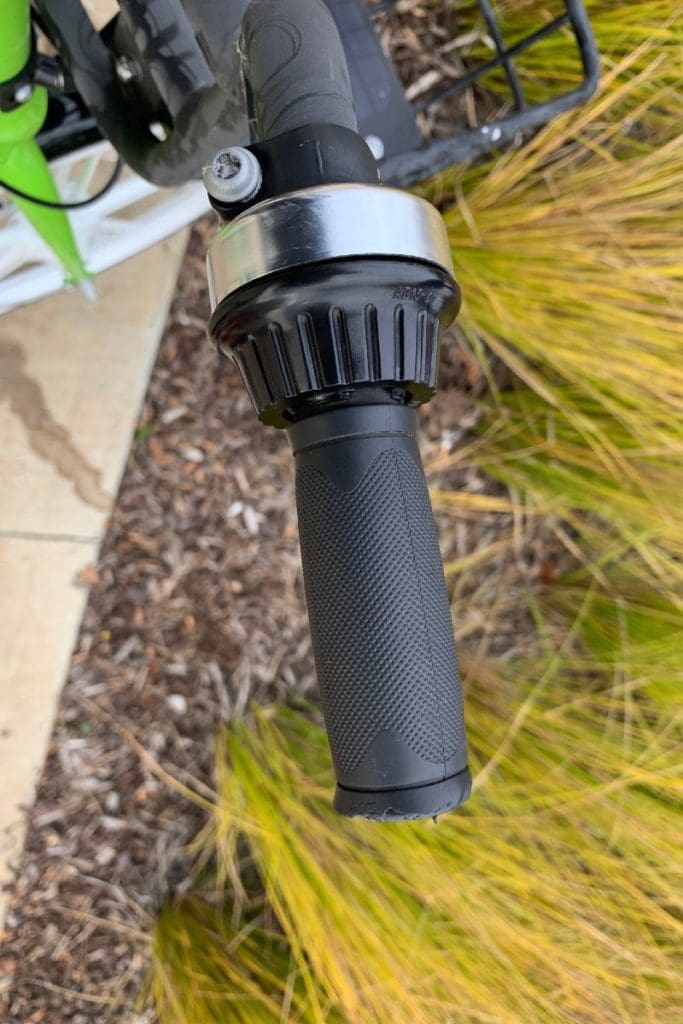
Then there were mechanical condition issues. At first, the front wheel would not rotate freely. I managed to fix that by bending the mudguard back into place with the sole of my shoe. Then I soon noticed a pronounced ‘bump, bump, bump’ when I was riding. It turned out that the front wheel’s airless tyre was not seated into the rim properly in one section, causing a big bulge.

The tyres themselves handled quite well, considering they’re airless. In fact, I’ve ridden several different airless tyre designs over the past 20 years and they seem to be improving because these were the best airless tyres that I’d ridden.
The solar-powered headlight was not working and looked like it may have either leaked or shorted due to condensation entering the small solar panel.

Airbike was by far the cheapest option at $2.70, but the least enjoyable.
It’s little wonder that scooter share worldwide has taken just two years to reach the same level of ridership that it took bike share 20 years to reach.
I think that bike share schemes will need to become fully electric to keep up with the competition. E-bikes overcome the necessary heavyweight that all share bikes need to be to have the durability and abuse resistance required. They’re also brilliant the moment the road or path starts sloping upwards.
Neuron
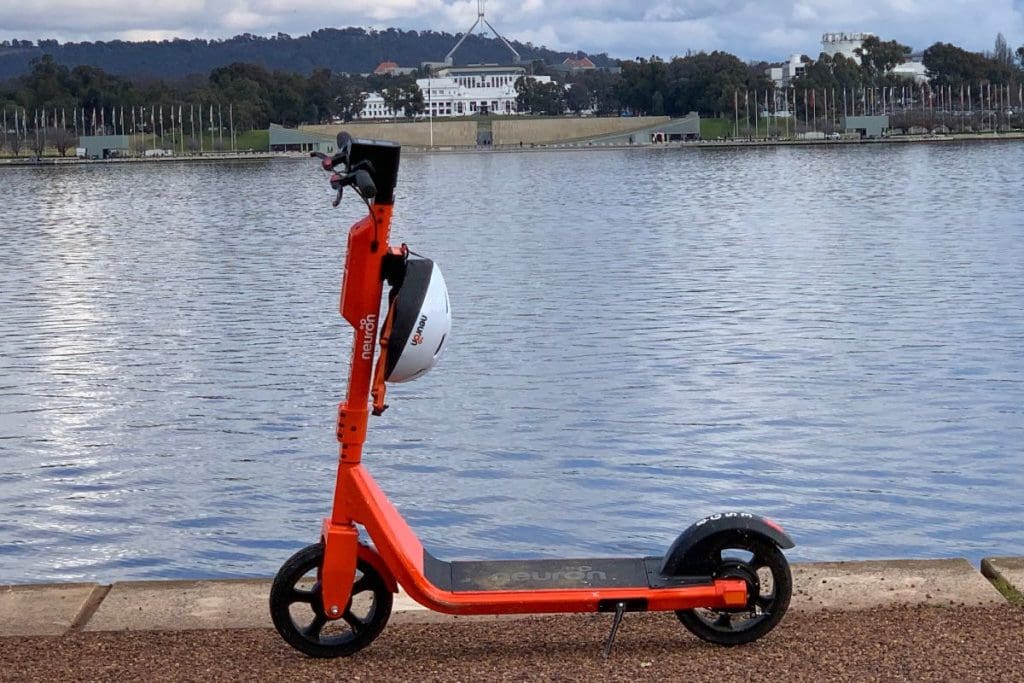
The first scooter I tried was the bright orange Neuron. Both the scooter systems are expensive if you hire them casually as I did. Both encourage you to take up a longer term hire or subscription package to save money per ride.
I hired both the scooters from Acton Park which is on the western side of Commonwealth Avenue, the main road that runs in a straight line between Civic and the new parliament house with its giant stainless steel flagpole set in the exact centre line.
Initially, the Neuron scooter felt very fast, because it was able to travel at 25 kph, but as soon as I rode under the Commonwealth Avenue Bridge into the ‘main basin’ sector of the lake, the scooter automatically geo-restricted the maximum speed down to 15 kph.
This certainly feels a lot slower, but no doubt was done as a safety measure as this stretch of the lakeshore is most popular with tourists, joggers, pedestrians, kids on scooters, dog walkers, parents with babies in prams and every other variety of mobile humanity.
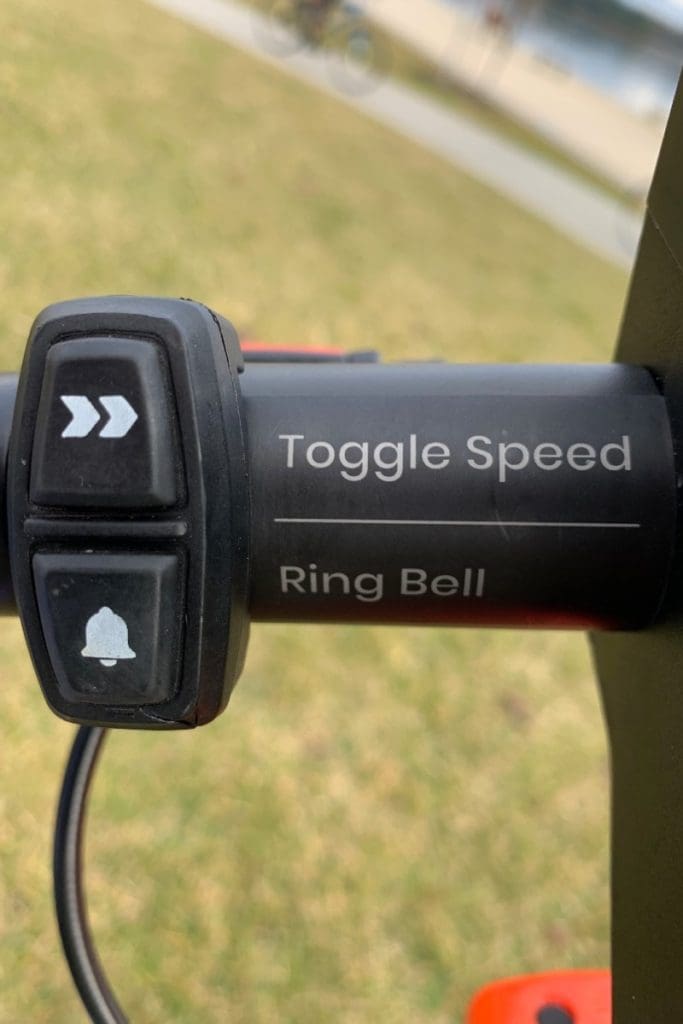
The Neuron gave a very harsh ride. Its very beefy front fork has no flex whatsoever.
My turnaround and photography point for each ride was the ceremonial centre-line of Canberra, which directly runs through the peak of Mount Ainslee, and the centres of the War Memorial, Old Parliament House and New Parliament House. This section is covered with a very coarse, rough red asphalt. Its colour and texture match the wide median strip of Anzac Parade that runs all the way from this point to the War Memorial so that everything looks uniform and monumental in tourist photos.
On this rough section, the Neuron was quite uncomfortable to ride and an inexperienced rider might find its vibration quite hard to handle.
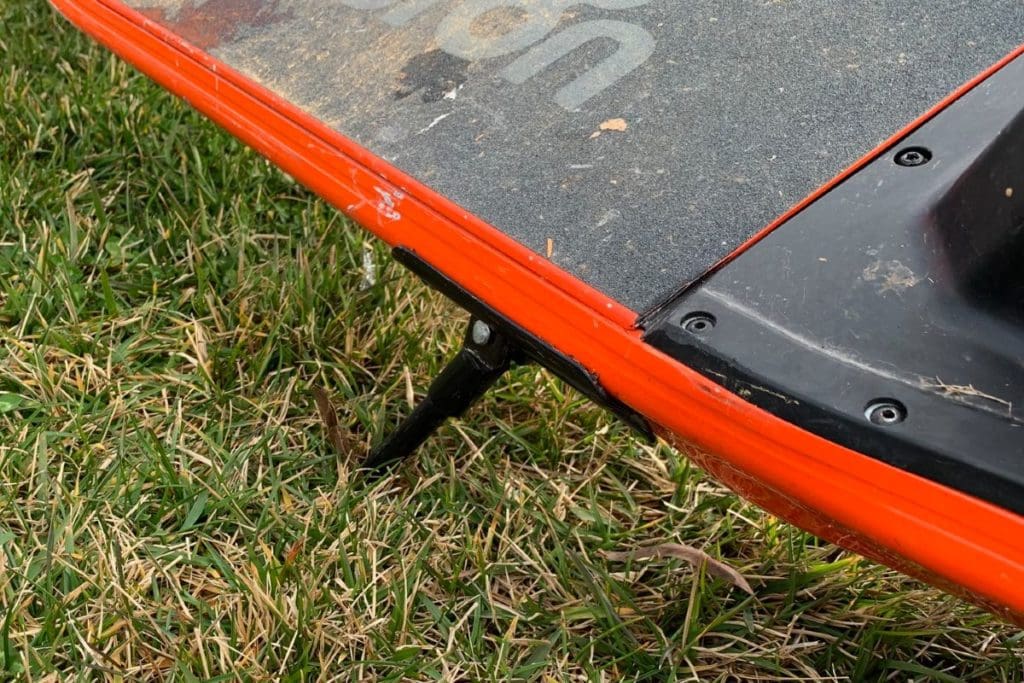
On the plus side, the Neuron had some features that the Beam did not, including an LED display on the stem. Both scooter models have head and tail lights that automatically turn on and stay on when the bike is hired.
It also gives voice instructions using an American female voice. When I moved the scooter after the hire period was over to take a photo, the voice first said, “Please download our app to hire the scooter”. Then when I kept moving it, the voice said, “Please be careful!”, followed by a criminal activity warning message.
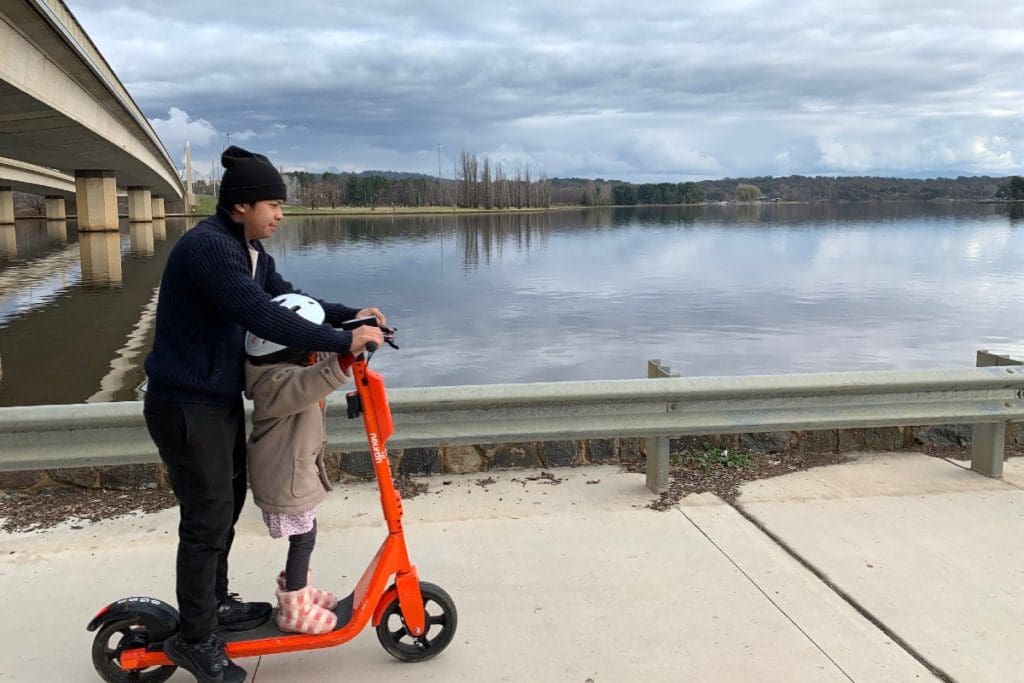
When I was returning the scooter, I happened to meet a Neuron worker who was re-balancer and recharging the fleet. He did not want to be photographed.
He was driving a Toyota Hi-Ace van with at least 50 batteries on board and about 20 scooters.
He said that some people had ridden the scooters into the lake. Sometimes he would see the helmet floating on the surface which would let him know that there was a scooter underwater just beneath because the water is very shallow at the lake’s edge. In these cases, he could retrieve the scooters, but he suspected there would be more, hidden below the surface.
He said some of the culprits were people who get drunk in the evening and think it’s an amusing thing to do.
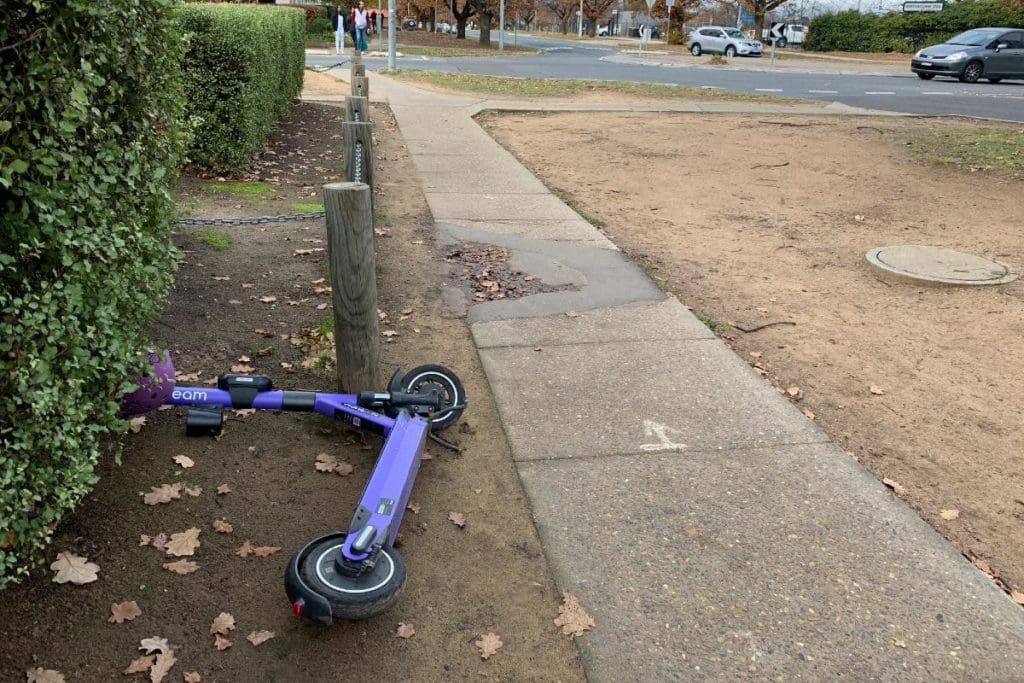
He said the scooters weigh about 25 kg. It only took him a few seconds to swap the batteries, which fit neatly into the compartment under the platform.
Both scooter systems have clear maps and warnings about parking the scooters in the right areas to avoid being fined. But he said in practice, so far at least, they weren’t fining people who were parking in the wrong place.
Beam
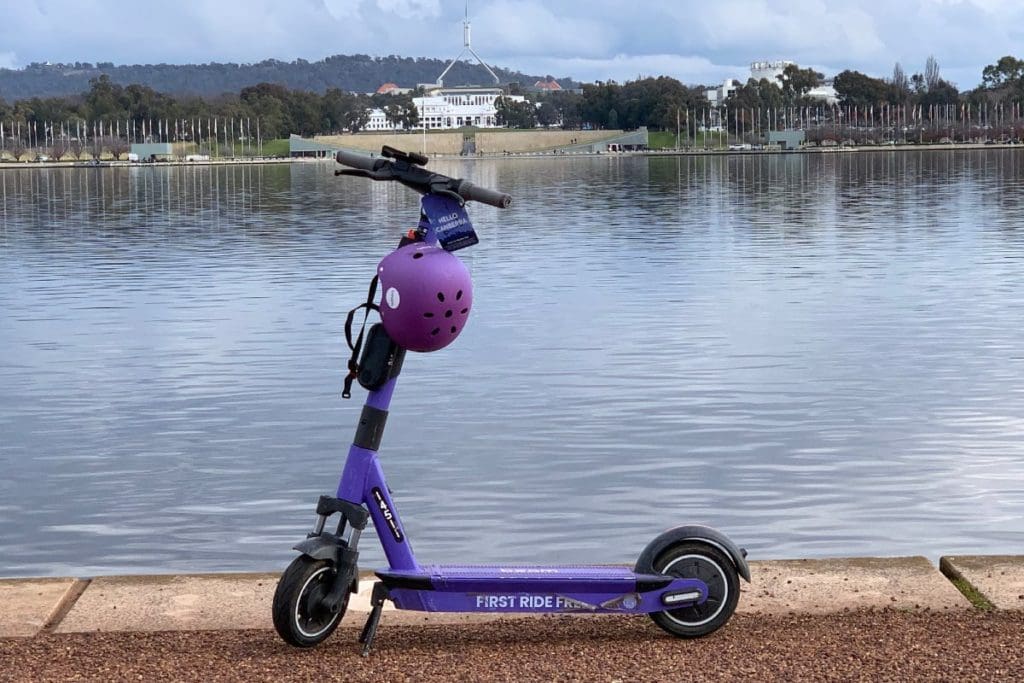
Next it was time to try a purple Beam scooter.
Just like the Neuron, the app download and scooter hiring process was quick and intuitive. In both cases, there was an option to say that I had my own helmet so that I was not obliged to wear the helmet supplied with each scooter.

Unfortunately, the Beam’s front brake, usually operated by the right hand lever, was not working at all. It appears to have a safety system which means that if the brake is not fully released, the throttle won’t work. So I had to push the brake lever back into its fully disengaged position for the scooter to work.
Beam scooters have telescopic fork front suspension, which gave a noticeably better ride than the Neuron, particularly when I reached the rough red asphalt section. The Beam’s head tube angle was more relaxed than the Neuron’s. This meant that it felt a fraction more stable when riding along.
The Beam was also speed geo-restricted as I passed under the Commonwealth Avenue Bridge, but the speed limit cut to around 18kph, not 15kph, which was noticeably quicker than the Neuron.
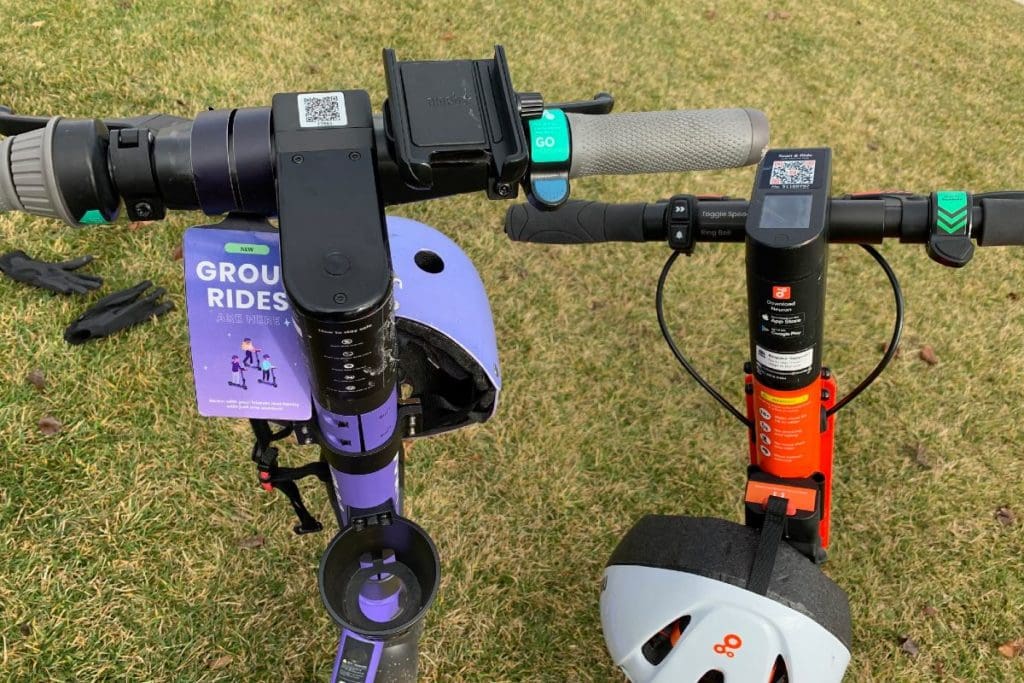


How Much?
The exact times and distances that I rode all three machines varied slightly because they were picked up and dropped off at nearby, but not identical locations and because I spent differing amounts of time stopping to take photos of each machine.
Therefore the costs are only broadly comparable.
The Airbike cost $2.70
The Beam was $7.75 which included a $1.00 ‘Parking Convenience Fee’ and $6.75 for the ride itself. Beam’s app shows that the time was 14 minutes 43 seconds but it does not give the distance or a ride map, unlike the Neuron.
The Neuron was $10.90 for a 21 minute 43 second hire covering 3.11km.
As you can see, for casual hirers, these scooters are expensive. But the price drops dramatically via a range of longer term passes that you can choose from.
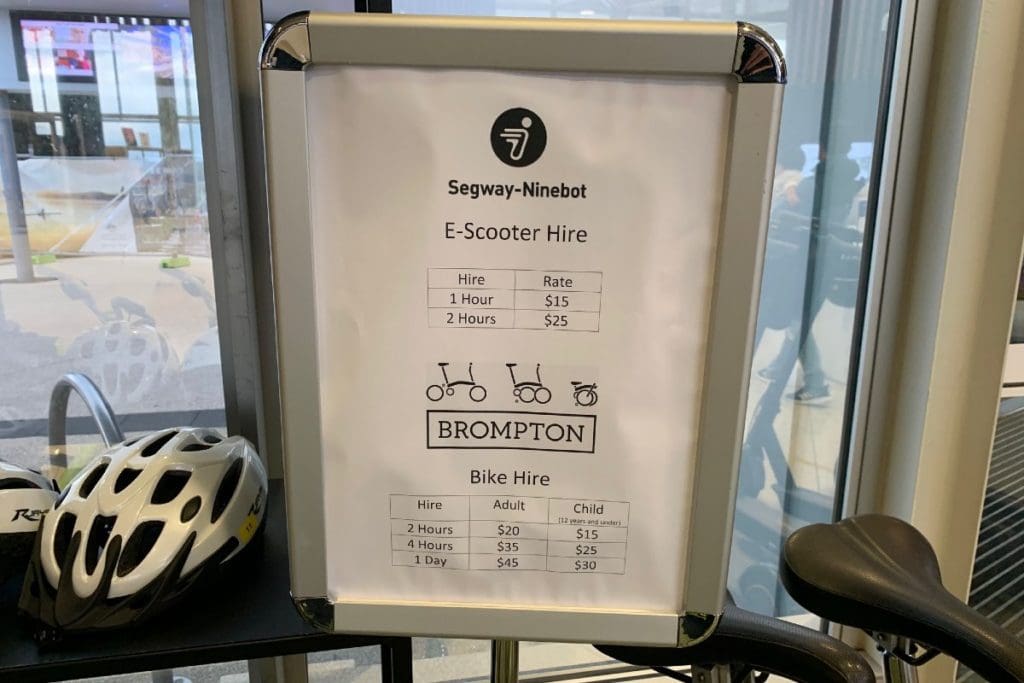

And the Winner Is…
None of the options were perfect.
Airbike was definitely in last place. If the owners spend just a little bit more time and thought about rider ergonomics before they buy their next fleet, these problems could be easily solved.
Neuron was unnecessarily harsh in its handling but had more sophisticated onboard electronics and perhaps a slightly better app.
Beam had the best handling, but the particular scooter I rode was let down by having a non-functioning front brake.
Overall the winner is all three systems, the City of Canberra, tourism, health, the environment and everyone who uses them. Everyone wins a prize!
Join the Conversation:
Have you ridden a specific rideshare vehicle that you have preferred over others? Tell us about your experience!

Good for short rides those scooters, but otherwise expensive if you want to use it for sightseeing between the main attractions around the lake
I felt it was over charged, almost equal to a taxi fare to the destination.
the main reason was because the machine continuously showing my scooter was not parked in the correct area. I parked in front of the international flags display area, Though it was a correct area but it wasn’t – and no reminding sound from the phone. I then had to search where the spot was and found one pretty far away, not convenient.
Thanks Julian, I’m glad you liked it. Once lockdown is over I hope to do more of this in other cities around Australia.
Good article, Phil.